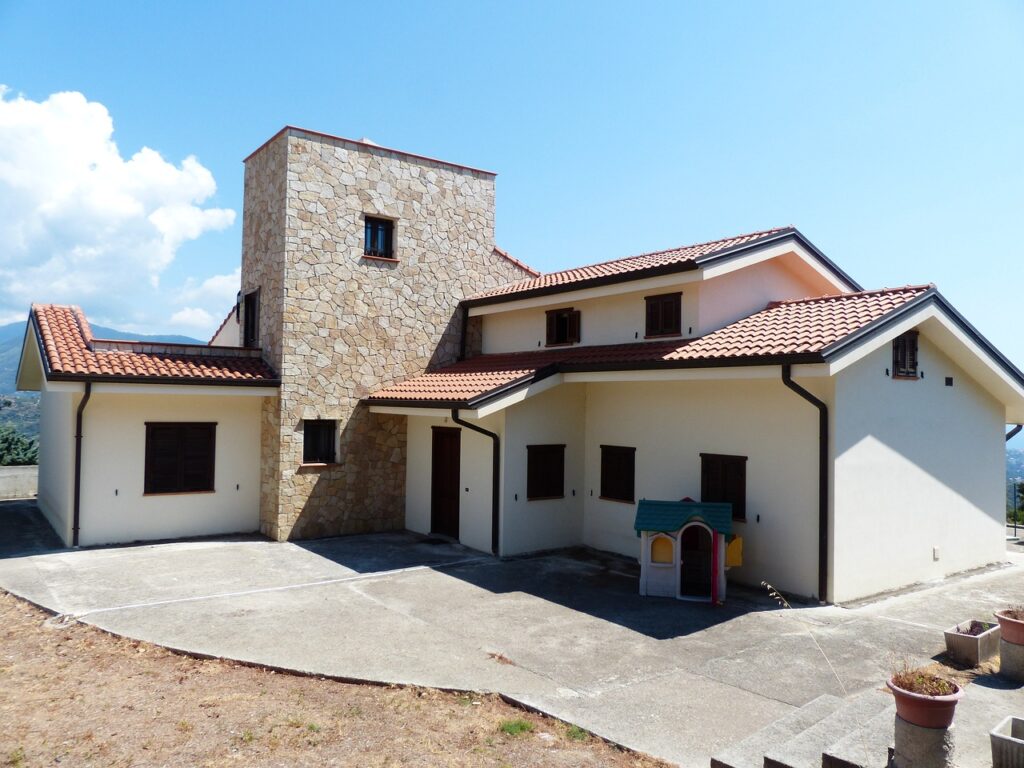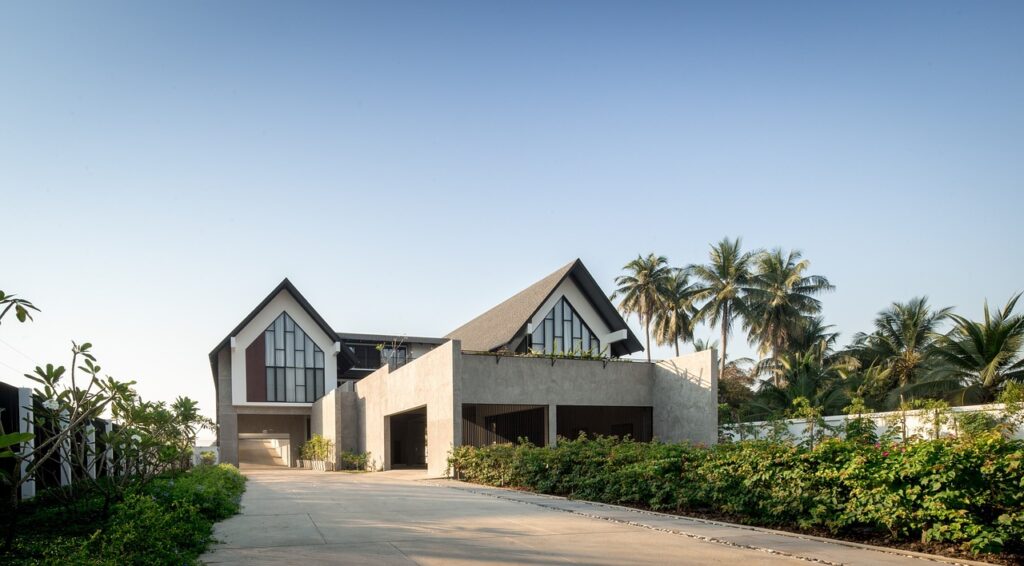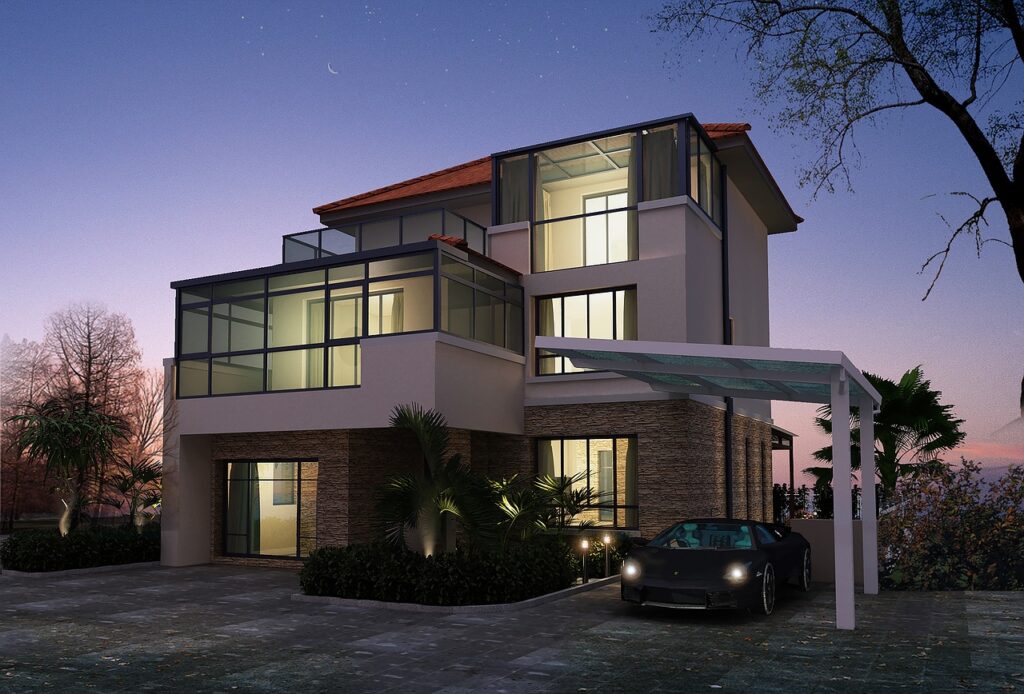Setting the right price for your villa’s long-term rental can feel like a delicate balancing act. On one hand, you want to ensure your property remains profitable; on the other, you need to keep it competitive in a dynamic rental market. It’s not just about putting a number on a listing; it’s about truly understanding what your villa offers and how it stands out among others. Whether it’s a unique location, luxurious amenities, or stunning ocean views, each feature plays a role in determining value.

At the same time, the goal isn’t only to maximize returns—you also want to attract reliable tenants who appreciate and care for your villa as much as you do. This is where finding the right balance comes in. In this article, we’ll explore the key factors that help you determine a rental price that fits your financial goals while remaining attractive to prospective tenants.
Researching the Local Rental Market
The first step in determining the rental price for your villa is to understand the current rental market in your area. Knowing what other property owners are charging and how much tenants are willing to pay helps ensure that your villa remains competitive while maximizing your returns.
Analyze Comparable Properties
Begin by researching comparable villas in your area, focusing on properties with similar features such as the number of bedrooms, bathrooms, and amenities like pools or gardens. Platforms like Airbnb, Booking.com, and local real estate sites are valuable resources for conducting a comparative market analysis (CMA). This approach helps you determine the price range for similar properties.
For instance, if you find that villas in your neighborhood with three bedrooms, a pool, and ocean views are listed for $2,500 to $3,500 per month, this sets a benchmark for pricing your own property. Keep in mind that even subtle differences, such as proximity to beaches, shopping centers, or schools, can influence the rental price. Villas located near prime locations typically command higher rates.
Consider Market Demand and Seasonality
Another critical factor in pricing is market demand and seasonality. In areas that attract tourists, demand for rentals can peak during certain times of the year, such as holidays or summer months. During these periods, you may have the opportunity to set a higher rental price due to the increased demand. However, for long-term rentals, consistency is crucial. Offering a competitive rate that attracts tenants throughout the year can help ensure steady occupancy, even during off-peak seasons.
Additionally, the local economy plays a role in determining pricing. For example, regions with a high influx of expatriates or foreign professionals may experience higher demand for long-term rentals, allowing you to charge a premium. Conversely, in times of economic slowdown or low demand, pricing your villa more affordably may help reduce the risk of vacancies and attract tenants more quickly.
Assessing the Villa’s Features and Amenities
After analyzing the local market, it’s essential to assess your villa’s unique features and amenities that can significantly impact its rental price. Tenants are often willing to pay more for properties that offer enhanced comfort, convenience, or luxury.
Size and Layout of the Property
The size of your villa is a key factor in determining the rental value. Larger villas with multiple bedrooms, expansive living areas, or sizable outdoor spaces tend to command higher prices. A villa with a separate guest house, a dedicated home office, or a spacious garage provides added convenience and can justify a premium rate. Additionally, if your villa offers flexible space for entertainment or large gatherings, this becomes an appealing aspect for tenants with families or those who plan to host guests regularly.
The layout of the property also matters. Villas with open floor plans, modern designs, and spaces that maximize natural light are often more attractive to tenants. Thoughtful interior design, where every room has a defined purpose yet flows seamlessly into the next, adds to the property’s value. A villa that feels spacious and functional—offering privacy for bedrooms while maintaining open common areas—enhances livability and can support a higher rent.
Added Amenities and Luxury Features
Luxury features play a significant role in boosting the attractiveness and rental price of a villa. Properties with private pools, jacuzzis, or well-maintained landscaped gardens stand out in the market. These features provide a sense of exclusivity and convenience, which tenants are often willing to pay a premium for. Similarly, high-end finishes such as granite countertops, custom cabinetry, and premium flooring contribute to the perception of luxury.
Amenities like high-end appliances, air conditioning, smart home technology, and robust security systems can further justify a higher rent. These modern conveniences not only enhance the tenant’s quality of life but also signal that the villa is well-maintained and up-to-date.
If your villa offers stunning views—whether of the ocean, mountains, or a picturesque landscape—this can serve as a major selling point. Properties with panoramic vistas naturally appeal to tenants looking for a serene or exclusive setting. Furthermore, being close to beaches, popular parks, or situated within prestigious neighborhoods also increases the desirability and value of the villa, allowing you to set a higher rental price.

Factoring in Maintenance and Operating Costs
When setting the rental price for your villa, it’s essential to account for all the expenses associated with maintaining and operating the property. This ensures that the rental income covers your costs while still allowing you to turn a profit.
Property Maintenance and Upkeep
Owning a villa requires regular maintenance to keep it in excellent condition, especially if the property includes features such as a garden, pool, or expansive outdoor areas. The costs for regular cleaning services, lawn care, pool maintenance, and general repairs should be factored into the rent. Additionally, consider long-term upkeep expenses such as repainting the villa’s exterior, replacing worn-out appliances, or upgrading furniture over time.
Deciding whether to include maintenance fees in the rent or to charge them separately is a crucial consideration. Some villa owners prefer to build these fees into the rental price, offering tenants the convenience of not having to worry about hiring outside services. Others may leave these costs to the tenants, but this must be made clear in the rental agreement. Regardless of the approach, your rental price should reflect the costs of keeping the property in optimal condition throughout the lease period.
Utility and Service Costs
Another important factor is whether to include utility costs such as water, electricity, internet, and waste management in the rent or to have tenants pay for these services separately. Offering a villa with utilities included can make it more appealing to tenants, as it simplifies their budgeting and reduces the number of bills they need to manage. However, it also means you must set the rent high enough to cover the additional utility expenses.
For example, villas with pools, large outdoor areas, or multiple air conditioning units tend to consume more electricity and water. If you choose to include utilities in the rental price, calculate an accurate estimate of these costs and adjust the rent accordingly. It’s essential to avoid underestimating these expenses to prevent eating into your profits. Alternatively, you can opt to exclude utilities from the rent, providing tenants with responsibility for managing these payments directly.
Understanding Legal and Tax Implications
When renting out your villa, it’s crucial to understand the legal and tax requirements that come with being a property owner. These considerations not only protect you legally but also help ensure that your rental operations are compliant and efficient.
Local Taxation and Rental Regulations
Earning rental income often means you are subject to taxation, which varies depending on the local tax laws of the region where your villa is located. In most cases, you will be required to pay income tax on your rental earnings, and potentially property taxes or even occupancy taxes if your rental is offered on a short-term basis. Familiarizing yourself with these tax obligations is crucial to avoid penalties and to ensure proper financial planning.
Additionally, it’s essential to stay informed about rental regulations that govern the landlord-tenant relationship in your area. This includes understanding landlord-tenant laws, which outline tenant rights, eviction procedures, and rules for raising rent or addressing disputes. Complying with these regulations not only protects you from legal issues but also fosters a transparent and fair rental process.
Rental Agreements and Legal Protection
A comprehensive rental agreement serves as your best legal protection when renting out your villa. This document should clearly outline the terms and conditions of the rental, providing legal safeguards in case of disputes or misunderstandings.
Key elements to include in your rental agreement are the rent payment schedule, security deposit policies, and tenant maintenance obligations. Also, ensure that the agreement specifies the procedure for resolving any disputes that may arise, such as through mediation or arbitration.
Consulting with a property management company or a legal professional to draft your rental contract is often advisable. This helps ensure that the agreement is legally binding and compliant with all local laws, giving you added peace of mind and protection as a landlord.

Adjusting Rent Over Time
Setting the right rental price is not a one-time task. Over time, market conditions change, and factors like inflation, property appreciation, and shifting demand in your area can influence whether it’s time to adjust the rent. Regularly reviewing and adjusting the rent ensures your villa remains profitable while staying competitive in the rental market.
Implementing Rent Increases
When increasing the rent, it’s crucial to adhere to the legal guidelines in your area, which typically require a specific notice period before any changes can take effect. Depending on local regulations, this notice could range from 30 to 90 days. To avoid misunderstandings, it’s wise to include a rent increase clause in your rental agreement, specifying when and under what circumstances rent adjustments may occur.
For instance, you might decide to increase rent annually to keep up with inflation or as property values rise. It’s essential to communicate these changes clearly to tenants, ensuring they are well-informed and have time to prepare. A reasonable and well-explained increase is often accepted by tenants, especially if it aligns with property improvements or maintenance.
Offering Competitive Rental Prices
In some cases, maintaining or lowering the rent can be more beneficial than raising it, particularly if the local rental market is competitive or if there is a dip in demand. Offering competitive rental prices ensures your villa remains attractive to potential tenants, reducing the likelihood of long vacancies.
When setting or adjusting rent, consider offering a slightly lower rate to fill vacancies quickly or retain high-quality tenants for longer. Reliable tenants who consistently pay on time and take good care of the property can provide better long-term financial stability than frequent turnovers or high vacancy rates. A slight reduction in rent may be a strategic move that results in steady occupancy and a more predictable income stream.
HeveaRent’s Expertise in Villa Rental Management
Tailored Rental Solutions for Villa Owners
When it comes to setting the right rental price and managing your villa, HeveaRent offers unparalleled expertise. With years of experience in the villa rental market, HeveaRent understands the delicate balance between maximizing your rental income and providing value to tenants. Their team conducts in-depth market analysis, evaluates the unique features of your property, and considers all relevant local market trends to help you set a competitive and profitable rental rate.
Full-Service Management for Stress-Free Rentals
More than just advising on rental pricing, HeveaRent offers comprehensive management services that include everything from property maintenance to handling tenant relationships. They take the burden off villa owners by managing day-to-day operations, ensuring that your villa is well-maintained, and providing seamless experiences for tenants. With HeveaRent, you can be confident that your villa remains a highly sought-after property while delivering consistent rental returns.

Conclusion
Setting the right price for your villa’s long-term rental requires a careful balance between maximizing your financial returns and remaining competitive in the market. By thoroughly researching comparable properties, considering your villa’s unique features and amenities, and accounting for maintenance and operating costs, you can determine a rental rate that attracts reliable tenants while securing a steady income.
Understanding local tax regulations and ensuring that your rental agreement is legally sound adds another layer of protection, both for your investment and for your relationship with tenants. Lastly, regularly reassessing the rental price and making adjustments when necessary allows you to keep pace with market changes and continue benefiting from your property.
By following these steps, you can confidently set a rental price that meets your financial goals and keeps your villa rented over the long term.
FAQs
You should consider local market trends, the unique features of your villa, ongoing maintenance costs, and any legal requirements that might affect pricing. These factors ensure a competitive yet profitable rental rate.
Research online platforms and local real estate listings to see what similar villas in your area are renting for. Adjust based on factors like property size, available amenities, and proximity to attractions or services.
Including utilities can make your villa more appealing to tenants, but be sure to adjust the rent to cover the additional expenses, especially for services like water, electricity, and internet.
Rent increases depend on the terms of your rental agreement and local regulations. Provide the appropriate notice period and ensure there’s a valid reason for any adjustments, such as market changes or increased maintenance costs.
In high-demand areas, you may consider raising the rent during peak seasons and offering discounts during low-demand months to keep your villa occupied year-round.
Ensure you comply with local rental laws, including taxation and tenant rights. It’s also important to have a legally sound rental contract that protects both you and the tenant.
Factor in the costs of regular maintenance, such as pool cleaning and garden upkeep. Decide whether to include these costs in the rent or charge tenants separately to cover ongoing expenses.
Overpricing your villa can lead to longer vacancy periods, which reduces overall profitability. It’s crucial to keep the price competitive with the local rental market.
Offering slightly lower rent for long-term tenants can ensure consistent occupancy, reduce turnover costs, and make your property more attractive to reliable tenants.
Review your rental price at least annually, or whenever there are significant changes in the local real estate market or the economic environment to ensure your pricing remains fair and competitive.
